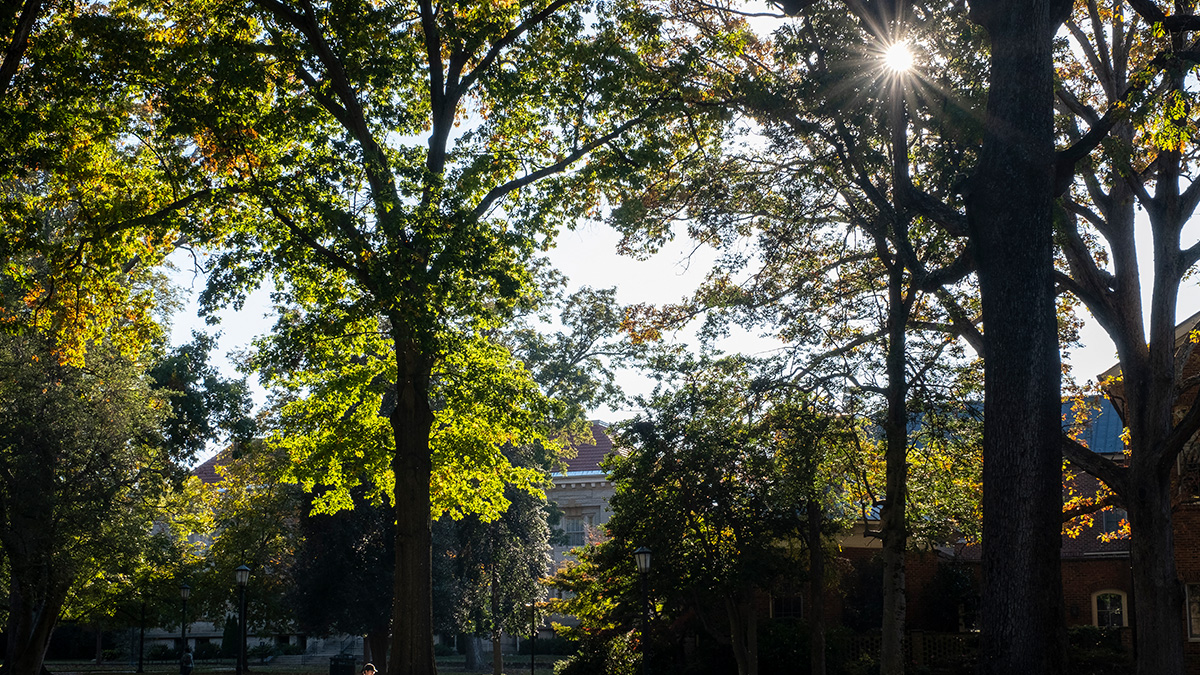Apollo 13 commander returns to Morehead Planetarium
Throughout the 1960s and 1970s, every NASA astronaut, including Apollo 13 Commander Jim Lovell, came to the Morehead Planetarium and Science Center at Carolina to train.
Everyone knows the line: “Houston, we have a problem.” The words came from Apollo 13 Commander Jim Lovell when one of the liquid oxygen tanks on the command module exploded, leaving the crew off course without electrical power and facing the sobering realization that they may become stranded in the frigid void of space. Although quick thinking by mission control bought the crew of Apollo 13 precious time, it was Lovell’s celestial navigation training at UNC’s Morehead Planetarium that ensured their safe return.
Throughout the 1960s and 1970s, every NASA astronaut came to Morehead Planetarium and Science Center at the University of North Carolina in Chapel Hill to train in celestial navigation and star recognition in the event of navigation systems failure. Early automatic navigation systems were prone to error, and NASA needed astronauts to have a reliable manual backup.
Lovell returned to Carolina on Thursday, the first time since his training some 40 years ago, to give a talk at Memorial Hall and help kick off the NC Science Festival, which is produced by Morehead Planetarium.That same evening, Morehead also announced its plans for a $5.2 million building renovation.
“We really enjoyed it down here. Hospitality was great in North Carolina. It was a great change of pace to get out of Houston or the Cape, and we made a lot of friends,” Lovell told reporters before his speech.
In all, Lovell made eight trips to Morehead throughout his astronaut career, and coming back to Morehead this month left him feeling nostalgic. “It’s a pleasure to be back here. Of course, I haven’t been to this room for years and years now. I had to readjust myself as I came in to say, ‘Is this exactly where I was?’”
Lovell and the other astronauts began their training at Morehead by learning how to identify constellations in the planetarium. Using the constellations as a guide, they would then be able to pick out the individual stars needed for navigation.
“Apollo had 37 navigable stars in its space on the computer, so we had to know where those stars were in the sky to maneuver if the automatic [navigation] system failed,” Lovell said.
To simulate the cockpit of the Apollo command module, Morehead employees built a partial replica to mirror the poor visibility out of the spacecraft window.
“I think the guys ginned this up, but it was really great to have us sit under a hood in a movable chair so that we could only see a portion of the sky at a time. And that would give us more training on how to maneuver out of our window to get to the proper stars,”Lovell said.
As the crew of Apollo 13 watched the stars tumble through the spacecraft window, they were forced to conserve what little electricity they had left by shutting down a number of critical systems, including the automatic guidance computer. This meant navigation had to be performed manually using the techniques the crew learned in Morehead, but there was an unforeseen complication.
The stars were obstructed by the cloud of gas and debris that surrounded the spacecraft from the explosion. In fact, the crew couldn’t discern stars from dust particles. Fortunately, Lovell summoned a celestial navigation technique that he had practiced during Apollo 8, a year and a half earlier. This involved using the Earth’s terminator, or dividing line between night and day, to define the position of the spacecraft. While unconventional, the technique was essential in putting the crew back on course for a safe reentry.
Asked whether he wished Apollo 13 was a more of a routine spaceflight, Capt. Lovell said: “I wish it was routine! One thing I learned though was that you have to have a positive attitude. You’re dealt a hand and you have to figure out how to play that hand.”




